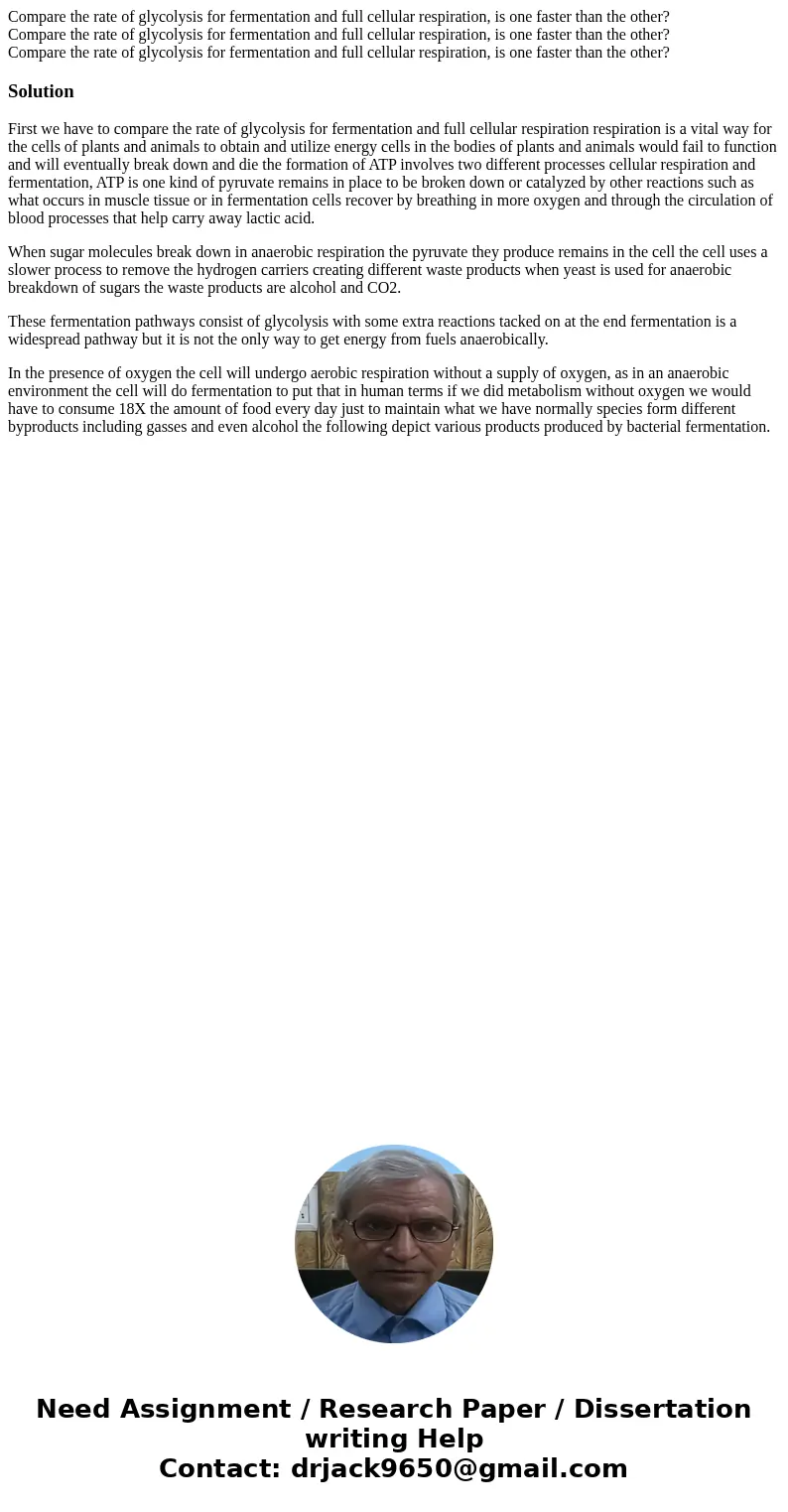Compare the rate of glycolysis for fermentation and full cel
Solution
First we have to compare the rate of glycolysis for fermentation and full cellular respiration respiration is a vital way for the cells of plants and animals to obtain and utilize energy cells in the bodies of plants and animals would fail to function and will eventually break down and die the formation of ATP involves two different processes cellular respiration and fermentation, ATP is one kind of pyruvate remains in place to be broken down or catalyzed by other reactions such as what occurs in muscle tissue or in fermentation cells recover by breathing in more oxygen and through the circulation of blood processes that help carry away lactic acid.
When sugar molecules break down in anaerobic respiration the pyruvate they produce remains in the cell the cell uses a slower process to remove the hydrogen carriers creating different waste products when yeast is used for anaerobic breakdown of sugars the waste products are alcohol and CO2.
These fermentation pathways consist of glycolysis with some extra reactions tacked on at the end fermentation is a widespread pathway but it is not the only way to get energy from fuels anaerobically.
In the presence of oxygen the cell will undergo aerobic respiration without a supply of oxygen, as in an anaerobic environment the cell will do fermentation to put that in human terms if we did metabolism without oxygen we would have to consume 18X the amount of food every day just to maintain what we have normally species form different byproducts including gasses and even alcohol the following depict various products produced by bacterial fermentation.

 Homework Sourse
Homework Sourse